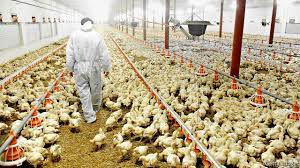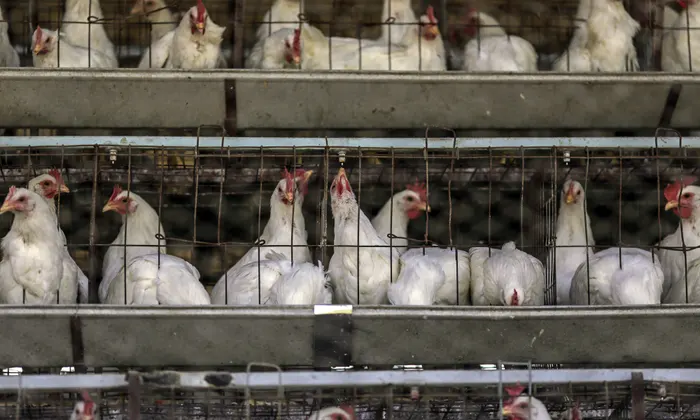Food Fights and Forgotten Respect

There is an ancient Zuni tale that has been passed down for generations by their storytellers. It was first published in 1884 but I enjoyed it in Kristina Rodanas’ beautiful 1992 book called the Dragonfly’s Tale. In short, the story goes…
In ancient times in what is now New Mexico, two powerful spirits, the Maidens of White and Yellow Corn, gifted the people with corn seeds, warm winds in the spring, and friendly rain in the summer. For years, the people harvested more corn than they could eat, easily moving through the winter times.
One day, a chief was watching the children having a mud fight. Having grown arrogant, he met with the other elders and proposed a way to show off their people’s wealth. He suggested that they invite other nearby tribes and host a food fight. Their weapons would be dough, bread, biscuits, and cakes. On the day of the event, the Corn Maidens visited in ragged clothing. No one offered to feed them. Rounding a corner, they came upon two orphaned children, who did offer them food. However, an elder snatched it away, saying that if they were too lazy to grow their own food, food should not be shared with them. “They are like hungry coyotes looking for an easy meal!”

Then the food fight began, and everyone hurled bread and smeared each other with batter, with food scattering on the plaza floor and adobe walls. The guests were disgusted. The Corn Maidens left with heavy hearts, realizing that the people were throwing away their gifts. They would rather waste, than feed the hungry. They instructed all the little four leggeds and winged ones to gather up all the crumbs and stow them away.
Winter came but the next spring, the warm winds came late, and the rains were sparse. The chants, dances, and other rituals did not prevent the weak plants from eventually withering and dying. That winter, hunger deepened, and the people turned to famine foods. Starving, the elders suggested they travel to a neighbouring village for help until the next spring, swallowing their pride.
No one told the orphaned children, who woke to find everyone gone. To comfort his sister, her brother made a dragonfly figure out of cornstalk and leaf, painting it and hanging it from the ceiling. That night the little girl whispered to the dragonfly, hoping it would fly away and find food. When the little corn dragonfly found the Maidens, they sent stores of food and seed to the children, in return for their past kindness. When the villagers returned in the spring, they saw the healthy little corn plants the orphans had planted and once again remembered food as a blessing and a gift.

There are many layers to this beautiful story, with multiple learnings. However, on this weekend of Canadian Thanksgiving, I remember the stories and sights of grain harvests from my grandparent's farm. Some years were abundant and safely stored away, but other years, crops were weakened by poor weather, mowed down by storms and tornadoes, or reduced by disease and pests. My dad explained the complexities of trying to harvest under such difficult circumstances. One year, my grandparents lost their harvest due to one of the harvest crew who threw his cigarette butt on the ground near the granary, burning it down overnight. I grew up understanding the tenuousness of food, as I listened to my Dad discuss that season’s reality with my uncles.

As a gardener, the difficulties of growing food are driven home every day as I struggle with too little rain and late season fog, pests from cabbage worm and potato beetle to squirrels and racoons, and diseases such as powdery mildew and rust. The crop can look great until the last two weeks and then a feeling of deflation when something hits. The food that graced the altars of the churches we attended, were a constant reminder to me as a child, that food is precious and a convergence of multiple blessings. However, there are myriad ways in which we, like the elders of this village, have forgotten respect for food.
From the 1990s, I remember local farmers explaining cheap food policy to our social justice movement members. The family farm had been one of mixed farming to feed themselves as well as selling high producing grain crops. Government policies were put into place to protect farm families and communities, fought for by the agrarian movement during the Great Depression of the 1930s. After WWII, agricultural research led to “improved” seeds, chemical inputs, genetic research and other biotechnology, and large machinery that could produce basic grains more efficiently in terms of high yield, and cheaply, for the lowest cost. Farmers were encouraged toward increasing specialization of crops for large-scale export. The ultimate goal in a competitive economy, which farmers embraced, was to maximize profits.

However, slowly, family farms were no longer able to sustain the huge inputs and slowly decreasing incomes. The food buying industries, to maximize their profits, continually reduced what they paid to farmers while increasing prices to consumers, benefitting their stockholders. Farmers themselves could not put food on their own tables; farmer suicide became far too familiar. Today, farmers receive only about 25% of the consumer cost of food, says Timothy Wise in “The True Cost of Cheap Food” in Resurgence magazine. Getting less for their crops, often less than half the cost of production, has squeezed farmers, who now need at least one off-farm wage earner to survive. Many family farms have gone out of business after generations, scooped up by multinationals such as Cargill or foreign land speculators. Large corporate farms now account for 92% of all pork production and 96% of all poultry production, and 80-90% of all cattle finishing in large feedlots. Of course, thousands of laying hens, vs the 350 hens of my favorite local egg producer, does reduce costs. However, as corporate power moved into the agricultural sector, government policies shifted to favour large food industries. Two wage earners with limited time means that most families now purchase ready-to-eat or value-added ingredients which require less preparation. The end result is that most of the prepared foods and packaging that you buy are owned by a handful of multinational corporations.

With economic globalization and structural adjustment programs since Thatcher and Reagan, the principle was to remove government subsidies such as price supports and protective tariffs, to achieve comparative advantage. Neoliberal economic theory trumpeted that each national economy should specialize in what they could produce most cheaply and provide that to the global commodity markets, while importing all else. Sounds great in theory but what are the costs of such policies?
Places like Mexico, the birthplace of corn and thus historically self-sufficient, could not compete with the cheap corn from the USA arriving as part of NAFTA (North American Free Trade Agreement). As Wise reports, the USA flooded Mexico with corn that cost half the price, with Mexico eventually importing 30% of its corn and displacing millions of farmers to the cities. This is just one of the ways that cheap food actually creates hunger. When markets fail, that too is globalized…as we saw with the production and transportation restrictions throughout COVID, the lack of workers and then the deaths of temporary foreign workers in tight living and working conditions, and now rising food inflation. When people cannot afford food, riots occur, as they have around the world for decades. As TK Ranch recounts, Cargill is only one of three companies that supply 85% of the meat sold in Canada. This does not ensure national food security or stable farming communities, but it is a pattern repeated across the globe. As climate change deepens, food security will become a more pressing reality everywhere.
Industrialization and globalization of the food system has another cost…a huge environmental cost. For instance, excessive water and chemical use for corn production has contaminated and reduced many waterways as well as created dead zones in the Gulf of Mexico. Vast monocultures reduce natural diversity not only within the crop species but habitat for native plant, animal, and bird species. Animals penned in tight cages or rooms for all of their lives is abhorrent as are some slaughter methods and feeding animal parts to herbivores.
Another cost of industrial food is taste and nutrition. As the structure of food has been tampered with and production techniques adjusted to mechanization and chemical inputs, the nutrition of food has plummeted and toxicity increased. As FarmProgress reports and Michael Pollan has researched, low-cost foods which are generally highly processed, have been made tastier through high amounts of salt, fats, and sugars, accounting for the twinned phenomena of obesity and poor nutrition. With the amount of engineering, food plants now lack their natural vitality, a lack passed onto us.

In my favorite Greek grocery store purchasing specialty cheeses as a treat for our Thanksgiving meal, the Greek owner quips that I should "enjoy these well", for soon they will not be available. Given the increasing costs of transportation and rotating food shortages, he says, Mediterranean producers are turning back toward local markets. Becoming a “locavore” oriented to a plant-based diet IS part of building an alternative food system. Another is a systems approach to farming which considers the whole ecosystem and utilizes environmental sustainability principles, practices called regenerative agriculture, permaculture, or agroecology. Combining crops, trees, and native grasses, as well as small livestock can boost soil health, store carbon, restore wild habitat, and create more nutritious food.

Comparing a home-grown carrot or tomato to industrial ones are shocking in terms of taste, or rather the lack of, even in organic foods. Being a foodie is not an answer…while I enjoy the tastes, aromas, and aesthetics of food presentation, food and drink should not be filtered through the status system of taste and money. On the other end of the spectrum, I feel sad when hearing tales from university dorms to others who have food fights with great hilarity. Industrially produced and mass cooked food does little to command respect.
Thus, the most profound loss in the way we produce and consume food is the loss of respect and a sense of sacredness toward our food. We have forgotten that plant beings are our kin. Animal beings are our kin. They are living by an ancient agreement…to cooperate with us and us with them. But we have forgotten our part of this ancient agreement. We consider seeds, plants, and animals as objects, subject to our physical control and domination thinking. The Western way manipulates people away from the honourable engagement in subsistence agriculture toward the painful cauldrons of either inner city, sprawling slums, or factory lines.

We can return to a "respect way of living"…that recognizes our kin and honours them, for their bodies become our food. We need to remember their sacredness, their participation in this agreement, and give our generous thanks. We can reverence the mystery of seeds who hold the ancient memory in their hard shells, and who will respond with kindness if we are kind. We can honour the Sun, Moon, and the Four Winds that bring the weather and growing conditions for the seeds to emerge and thrive. If we come back to this relationality way of being, kinship way of regarding the living world, and a humble gratitude for the myriad of ways we are kept alive, we can create a culture of kindness that flows in tune with these ancient lifegiving rhythms.

Take time this harvest season, to say a short verse from the Haudenosaunee (Iroquois or Six Nations) Thanksgiving Address:
We honour and thank all the Food Plants we harvest from the garden (or that were harvested for us). Since the beginning of time, the grains, vegetables, beans, and berries have helped the people survive. Many other living things draw strength from them too. We think of all the Food Plants now and send them a greeting and our thanks.
Note: Dragonfly's Tale by Kristina Rodanas is published by Clarion Books. The image of the seed planting ritual is from F. Apffel-Marglin, Subversive Spiritualities: How Rituals Re-enact the World. The Thanksgiving Address booklet can be purchased here: https://thetrackingproject.org/the-tracking-project-teaching-resources/










































Opmerkingen